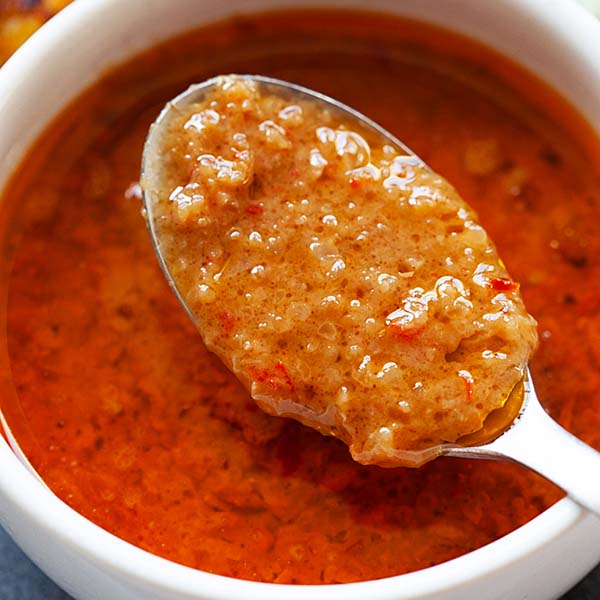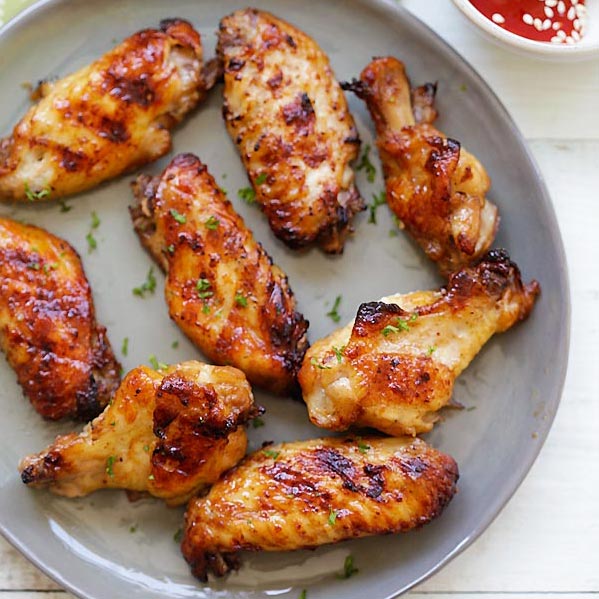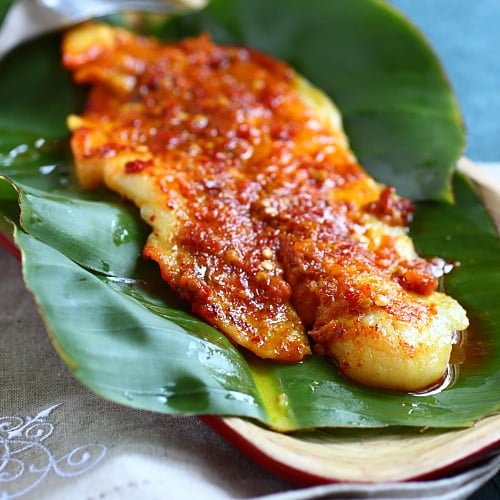This post may contain affiliate links. Please read my privacy policy.
This chicken satay recipe is one of my favorites—easy, authentic, and impossible to resist! The chicken skewers turn out juicy and tender thanks to a flavorful marinade that soaks right in. I cook them on the grill for that perfect char, then serve with a rich, spicy peanut satay sauce. Every bite is packed with delicious flavor—great for sharing at gatherings or enjoying at home.
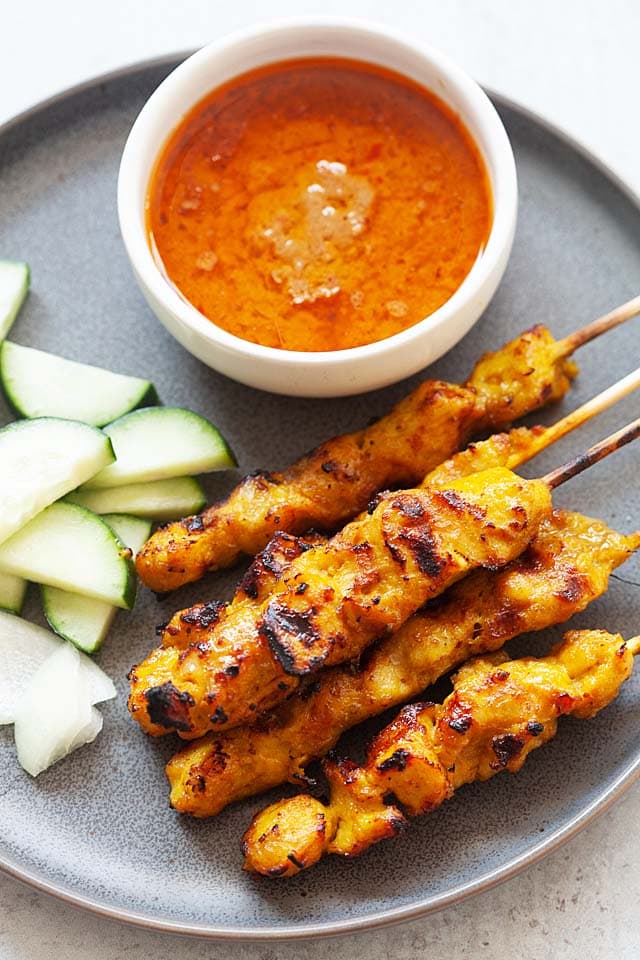
Easy Chicken Satay Recipe
Chicken satay is one of the most beloved Asian appetizers, and it’s easy to see why. The combination of lemongrass, aromatics, and spices like turmeric and coriander gives it such a unique and irresistible flavor. There’s never a bad time to enjoy chicken satay. Whether I’m making it for a quick weeknight meal or grilling it for a weekend barbecue, it’s always a treat.
I highly recommend trying this Malaysian chicken satay recipe served with authentic peanut sauce! With over 300 votes and an average rating of 4.6, it’s been loved by home cooks worldwide—and I know you’ll love it too. Don’t forget to check out my step-by-step video and tips for making chicken satay at home!
“AMAZING! I followed your recipe to the letter and it came out perfect. Everyone loved it, even the finicky eaters. Each skewer was packed with flavor, juicy & presented beautifully. Thanks for the recipe!”
– Reem
What Is Satay
Satay is a beloved street food across Southeast Asia—think Indonesia, Malaysia, and Thailand. It’s marinated meat skewers grilled over an open flame and served with a rich peanut dipping sauce.
Whenever I picture satay, I see perfectly grilled, nicely charred chicken skewers, dipped into a mouthwatering peanut sauce. Even if you’re not usually a fan of skewers, the incredible combination of flavors in satay is hard to resist.
The most common protein for satay is chicken, but you can use beef, pork, lamb, mutton, or even tofu. The marinade and spices may vary slightly depending on the region, but the end result is always finger-licking good!
Looking for more chicken skewer recipes? Try my Honey Sesame Chicken Skewers and Chicken Yakitori recipes!
The Best Chicken Satay
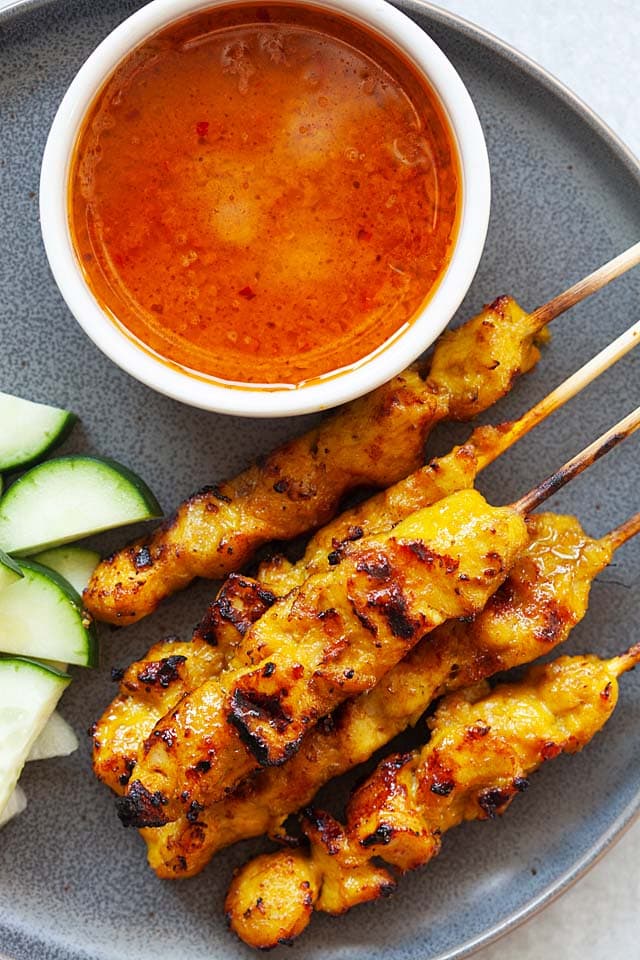
Here are so many versions of satay recipes across Asia, but I’m convinced that Malaysia has the best satay recipe in the world! Known as “Satay Ayam” or “Sate Ayam” in Malaysian, any real foodie who’s traveled throughout Southeast Asia will tell you it’s hands down the best.
While Thai chicken sate is delicious, it doesn’t quite match the bold, flavorful, and scrumptious taste of the Malaysian version. The difference really comes down to the marinade ingredients.
Satay Marinade Ingredients
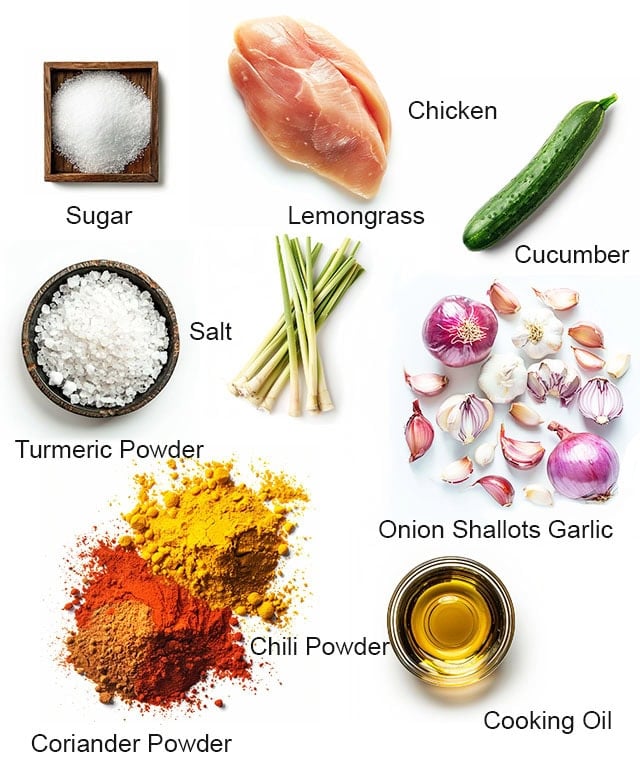
The marinade is the most important part of the recipe. Malaysian satay chicken is marinated with lots of herbs, spices, and ingredients, such as:
- lemongrass – imparts that iconic fresh, sweet, lemony aroma to the meat while adding a slightly tangy flavor.
- shallots – adds a subtle sweetness to the dish.
- turmeric powder – important for that beautiful golden yellow hue! It also gives an earthy, slightly bitter note to balance out the flavors.
- coriander powder – boasts an intense citrusy and peppery note that pairs well with lemongrass.
- garlic – a must-have in any marinade!
- chili powder – optional but highly recommended! Adjust the amount based on your preferred level of spiciness.
- salt and sugar – enhance all the other flavors.
Traditionally, home cooks pound all the ingredients above with a mortar and pestle until it becomes a fine paste. Then, they let the meat (either chicken, beef, pork, or mutton) sit with this marinade overnight for maximum flavor.
I personally use a food processor to make the marinade, and I always marinate the chicken overnight. The longer it marinates, the more tender and flavorful the meat becomes!
Please refer to the recipe card at the bottom of this post for full details on each ingredient.
How To Make Chicken Satay
If you still haven’t tried these chicken skewers, it’s time to add it to this week’s menu. The best part? It’s 100% homemade but prepping this street food is so easy and won’t take an entire afternoon.
My authentic satay recipe is just as delicious as the ones you get from street vendors in Malaysia. Anyone who loves grilled meat must try this at least once in their lifetime!
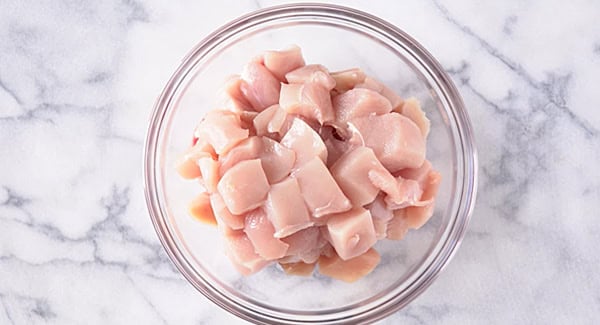
Cut the chicken into small bite-sized cubes and set it aside. Perfect little pieces for skewering later!
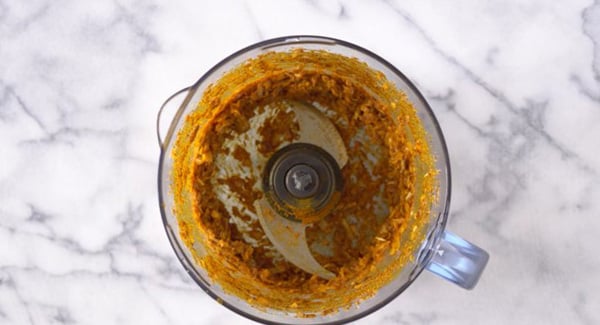
Toss all the marinade ingredients into a food processor and blend them up until smooth. If it’s a bit thick, just add a splash of water to get it going.
For the peanut sauce, you can follow my go-to homemade Peanut Sauce recipe—it’s a winner every time!

Mix the chicken with the marinade and give it a good stir so everything’s coated. Let it hang out in the fridge for at least 6 hours—overnight is even better if you’ve got the time.
When you’re ready to cook, thread 3-4 pieces of chicken onto each bamboo skewer. Fire up the grill and cook the skewers for about 2-3 minutes on each side, until the chicken’s fully cooked and you’ve got that nice char going. Don’t forget to baste them with a bit of oil while grilling—it makes them extra juicy!
Serve them up hot with some peanut sauce, fresh cucumber slices, and onions on the side. So good!
Homemade Peanut Satay Sauce
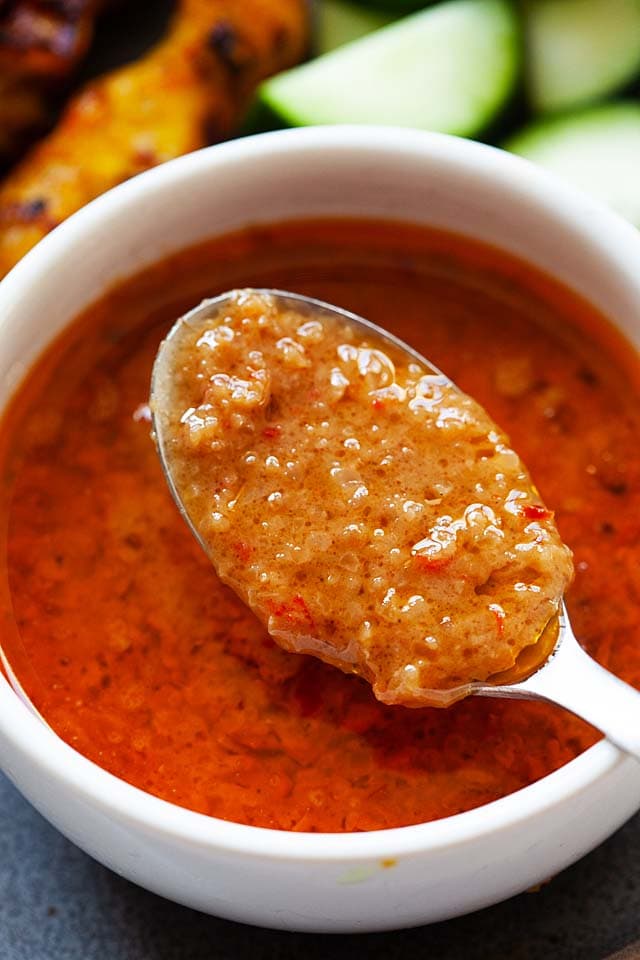
It’s not satay without the peanut sauce! This rich, addictive sauce is what takes the skewers to the next level. Skip the store-bought peanut butter and make it from scratch using my Peanut Sauce recipe!
My version stands out because it’s light, mildly spicy, authentic, and full of flavor—perfect for a break from those usual sweet, heavy sauces. Trust me, it’s the real deal!
Cooking Tips
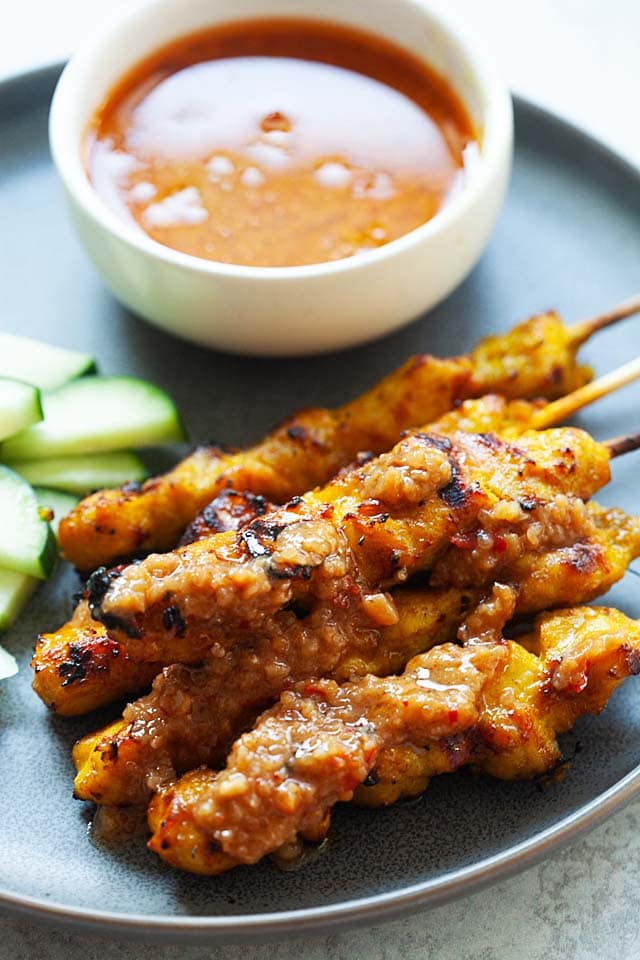
- I use a mix of chicken breasts, thighs, and legs for satay. Cutting them into uniform pieces ensures they cook evenly—no undercooked or overdone bites!
- To get the best flavor, I always marinate the chicken overnight. This really lets those deep, delicious flavors soak in, making a world of difference.
- Before grilling, I soak bamboo skewers in water for at least two hours. It’s a simple step, but it prevents the skewers from burning on the grill.
- I always use a charcoal grill when making satay—the smoky aroma it adds to the chicken is unbeatable.
- When threading the skewers, I like to add a piece of chicken skin between the meat chunks. The fat bastes the meat while it grills, keeping it moist and juicy. Plus, once it melts away, it leaves behind beautifully charred and crispy edges.
- For basting, I cut off the white end of the lemongrass stalk (about 6 inches) and discard the rest. After pounding the white end with a pestle or the flat side of a cleaver, I add it to the oil. It gives the chicken a more pronounced lemongrass flavor that’s absolutely delicious.
- Once cooked, I use a pair of scissors to snip off any over-charred or burnt bits—just a little finishing touch that makes the satay look and taste just right!
Frequently Asked Questions
Yes, it is healthy as it’s high in protein and low in fat. It uses spices such as turmeric and coriander that have immune-boosting antioxidants and anti-inflammatory properties. It’s also cooked on the grill, which generally reduces the amount of oil needed.
Absolutely! You can definitely use pork for your satay recipe. Just follow the same marinade process and cook it on skewers. Adjust the cooking time slightly—pork may need a bit longer to cook through compared to chicken, so aim for 12-15 minutes in a preheated oven or on the grill.
You can definitely bake satay in the oven at 400°F (200°C). Place the skewers on a baking sheet and bake for about 15-20 minutes, turning them halfway through. This method will give the satay a nice golden color, but they might not have that same charred flavor you get from grilling. It’s still a delicious option when you can’t use a grill.
Yes, you can pan fry them in a skillet. For best results, use a cast-iron grill pan. Heat a little bit of oil in the pan on medium-high heat and cook for 3-4 minutes per side until cooked through.
Yes, you can air fry the chicken satay! Preheat your air fryer to 400°F (200°C). Place the skewers in a single layer in the basket and cook for 10-12 minutes, turning halfway through. This will give your chicken a nice, crispy exterior while keeping it juicy inside.
Absolutely! After marinating, tightly wrap the uncooked or raw satay sticks with a few sheets of aluminum foil. You can store it as is or use a freezer-safe container or ziplock bag before freezing for up to 3 months. When you’re ready to cook, let them thaw in the fridge overnight before grilling.
Absolutely! Preparing the peanut sauce in advance is a smart move. You can store it in the fridge for up to a week. Just give it a good stir before using—it might thicken or separate a bit, but it’s still perfect for dipping or drizzling over your satay!
You can store your leftover peanut sauce in a sterile glass jar in the fridge for about 1 to 2 weeks. Just make sure it’s tightly sealed to keep it fresh. If it starts to look or smell different, it’s probably time to toss it out.
The leftovers will keep well in an airtight container in the fridge for up to 3 days. Make sure it’s completely cooled before storing.
You can reheat satay in the air fryer or oven at 350°F (175°C) for 6–8 minutes until warmed through. Or warm it up in a skillet over medium heat with a splash of oil. Microwave works too—just cover with a damp paper towel to keep the meat juicy.
This recipe is 263 calories per serving.
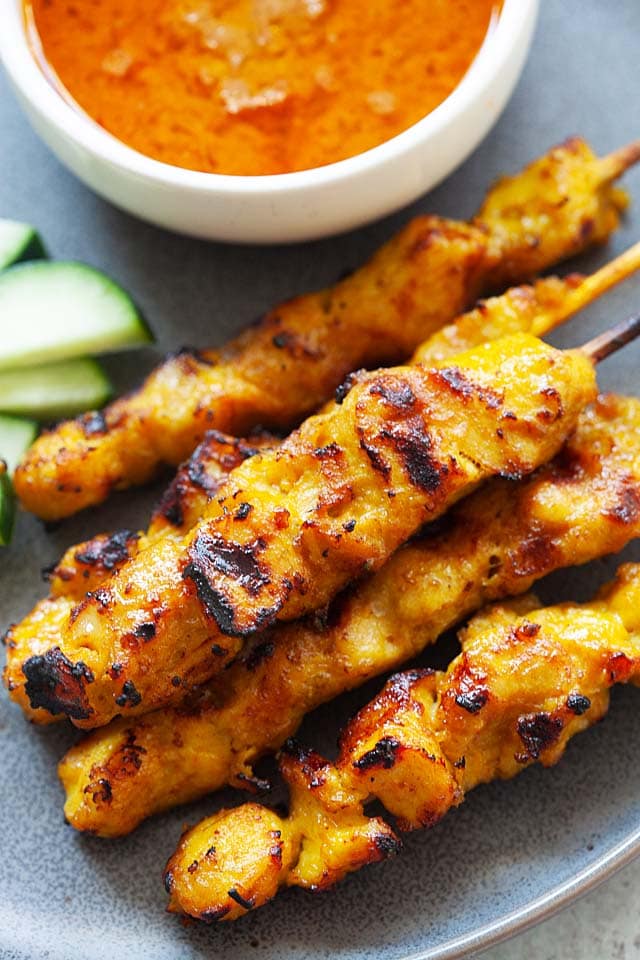
Related Recipes To Try
Satay is best served with peanut sauce, sliced cucumbers, and cut onions. They serve as a refreshing and crunchy contrast to the tender chicken, cleaning the palate in between bites.
This dish goes well with plain jasmine rice, fried rice, or as a side dish to Asian noodles. In Malaysia and Indonesia, it is often eaten with bite-sized rice cakes called ketupat.
If you are having an outdoor BBQ party, I recommend the following recipes:
I hope you enjoy this post as much as I do. If you try my recipe, please leave a comment and consider giving it a 5-star rating. For more easy and delicious recipes, explore my Recipe Index, and stay updated by subscribing to my newsletter and following me on Facebook, Pinterest, and Instagram for new updates.
Other Skewer Recipes You Might Like


Chicken Satay (The Best Recipe!)
Equipment
- Bamboo skewers soaked in cold water for 2 hours
Ingredients
- 2 lbs (1kg) boneless and skinless chicken breasts, thighs, or legs
- 1 cucumber, cut into small pieces
- 1 small onion, quartered
- oil, for basting
Chicken Satay Marinade:
- 3 tablespoons cooking oil
- 2 stalks lemongrass, white parts only
- 2 cloves garlic, peeled
- 6 small shallots , or pearl onions, peeled
- 2 teaspoons turmeric powder
- 1 teaspoon coriander powder
- 1 teaspoon chili powder
- 1/2 tablespoon salt , or more to taste
- 2 tablespoons sugar , or honey
Instructions
- Cut the chicken meat into small cubes. Set aside.
- Blend all the Chicken Satay Marinade ingredients in a food processor. Add a little water if needed.
- Make the chicken satay sauce. Follow my peanut sauce recipe.
- Combine the chicken and the marinade and stir to mix well. Marinate the chicken for 6 hours in the fridge, or best overnight. When ready, thread 3-4 pieces of the chicken meat onto the bamboo skewers.
- Grill the chicken satay skewers for 2-3 minutes on each side until the meat is fully cooked, and the surface is nicely charred, on both sides. Baste and brush with some oil while grilling. Serve hot with peanut sauce, fresh cucumber slices, and onions.
Video
Notes
- use a mix of chicken breasts, thighs, and legs for satay. Cutting them into uniform pieces ensures they cook evenly—no undercooked or overdone bites!
- To get the best flavor, I always marinate the chicken overnight. This really lets those deep, delicious flavors soak in, making a world of difference.
- Before grilling, I soak bamboo skewers in water for at least two hours. It’s a simple step, but it prevents the skewers from burning on the grill.
- I always use a charcoal grill when making satay—the smoky aroma it adds to the chicken is unbeatable.
- When threading the skewers, I like to add a piece of chicken skin between the meat chunks. The fat bastes the meat while it grills, keeping it moist and juicy. Plus, once it melts away, it leaves behind beautifully charred and crispy edges.
- For basting, I cut off the white end of the lemongrass stalk (about 6 inches) and discard the rest. After pounding the white end with a pestle or the flat side of a cleaver, I add it to the oil. It gives the chicken a more pronounced lemongrass flavor that’s absolutely delicious.
- Once cooked, I use a pair of scissors to snip off any over-charred or burnt bits—just a little finishing touch that makes the satay look and taste just right!
Nutrition
Nutrition information is automatically calculated, so should only be used as an approximation.
